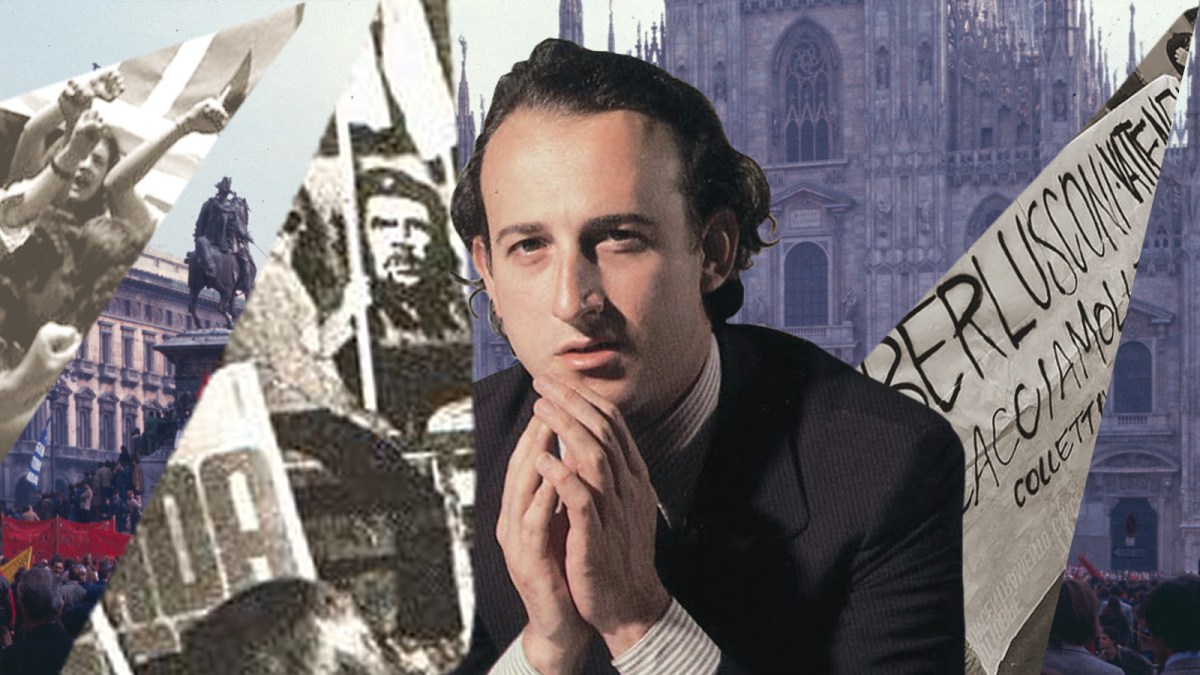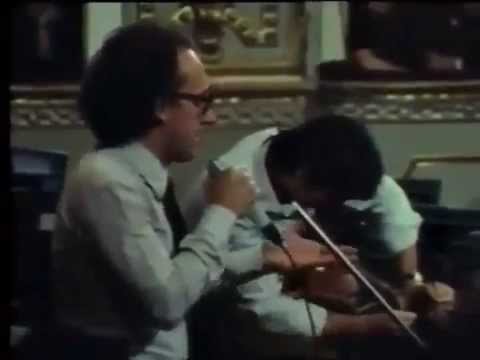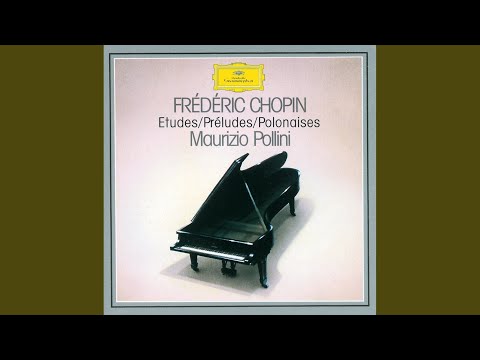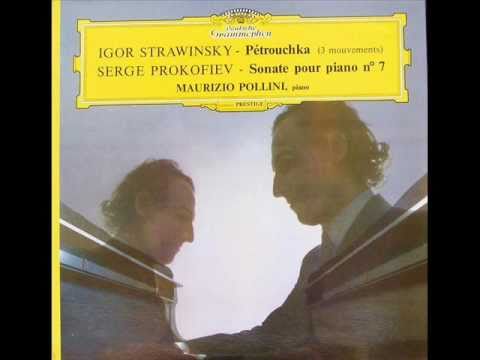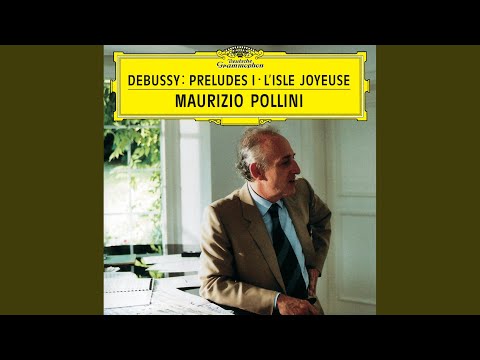The 2014 EuroArts documentary portrait of Maurizio Pollini, “De main de maître,” opens with a literal portrait: that of the pianist’s great-uncle. The interviewer mistakes the painting for Pollini himself. Pollini recounts the life of his forbear: “He ran away from home when he was 16, in 1800, joined Garibaldi’s army, and took part in the battle of Mentana, which Garibaldi led against the Papal States without the help of the Italian State.”
It’s a perfect moment of metaphor, veering into metonymy. Pollini, who died on March 23 at the age of 82, was no soldier, but he was a revolutionary in his own right. As often as he was called “aristocratic” for his style (combined with an architectural sense of musical structure that he inherited from his father, a literal architect), Pollini began his career just as he started to develop a political consciousness. He didn’t see the two as one and the same—“Music is one thing, interest in political ideas is another,” he says in “De main de maître”—but in another interview, he did say that great art “has entirely progressive aspects within it, elements that are somehow outside the detail of the text or even the political opinions of the person who made it.”
Despite frequent criticisms that his technique and intellectual rigor could undermine the emotional heart of a work, I think Pollini was simply working towards a different emotional core, one that placed both old and new music in vital dialogue with the world as it unfolded outside of the concert house; a core that was surrounded by more than the pursuit of absolute beauty (though Pollini could easily tap into that vein as well). These five performances are just a few examples of that dialogue.
Johannes Brahms: Three Intermezzi, Op. 117 (1892)
On December 18, 1972, amid deadlocked peace negotiations between Henry Kissinger and Lê Đức Thọ, Richard Nixon launched Operation Linebacker II. Nicknamed the Christmas Bombings, the 11-day campaign dropped more than 20,000 tons of weaponry on North Vietnam, making it the largest heavy-bombing campaign since World War II. (One of Kissinger’s aides would later describe the event as “bomb[ing] the North Vietnamese into accepting our concessions.”)
On December 19, a 29-year-old Pollini strode onto the recital stage of Milan’s Società del Quartetto. Before sitting down to play Brahms, he gave a speech from the stage on behalf of a group of Italian artists—including Claudio Abbado and Luigi Nono—condemning the military campaign and describing the American government’s action as “a unilateral suspension of peace negotiations in Vietnam.” (Plus ça change.) “When I got to the word ‘Vietnam,’ a sudden roar erupted in the hall, as if a fuse had been placed under every chair,” Pollini would later recall. The police arrived on the scene before he could finish his speech, let alone play a single note. It’s a shame, as the opening work—Brahms’s Three Intermezzi, Op. 117—would have made a smooth transition from politics to art. Brahms famously described the piece as “three lullabies of my grief,” which surely would have been an apt metaphor for how artists of conscience felt as the war played out.
In this 1980 performance, Pollini doesn’t play the Intermezzi from the vantage point of Brahms taking stock of his life in his final years, a popular read on the work. Rather, he plays them from his own grief; they are an elegy for a century that was nearly over, but one whose scars would last well into the next millennium.
Luigi Nono: “Como una ola de fuerza y luz” (1972)
Roughly six months before Pollini shut down his own recital in Milan, he was on another stage in the city—Teatro alla Scala—once again alongside Abbado and Nono. In Chile during the summer of 1971, Nono met Luciano Cruz, a young and charismatic leader of the country’s Marxist-Leninist party, Movimiento de Izquierda Revolucionaria. Cruz made an impression on Nono, who was shocked to learn that, just a few weeks after his return to Italy, the young revolutionary died under circumstances that even the CIA considered to be suspect. (To the Agency’s credit, they weren’t facilitating any U.S.-backed coups in Chile until 1973.)
Nono was already planning to write a work for Pollini, and poured what he called the “presence-absence” of Cruz into “Como una ola de fuerza y luz” for soprano, piano, orchestra, and magnetic tape. “I wanted my music to be like a space that opens and closes, something like a life that extends and closes again,” Nono said, a riff on the theme of “presence-absence.” The piano enters this space in distorted depths of the piano’s lower half, Pollini’s performance guttural and promethean. His final bars of music are frantic gasps towards the upper register—as the title suggests, a sonic wave of strength and light.
While some of the adjectives that followed Pollini throughout his career—“cool,” “detached,” “reserved”—were seen as deficits, his precision is an asset here (Nono even praised his commitment to the “precise human musical commitments of our time”). “Como una ola” isn’t a requiem or a passion; Nono saw it more as an epitaph, which leaves Pollini in the role of rapporteur versus a stand-in for Cruz himself. His performance is an act of bearing witness, observing the horrors of the 20th century and reporting back to the audience, allowing them to draw their own conclusions.
The latest from VAN, delivered straight to your inbox
Fryderyk Chopin: Polonaise No. 3 in A Major, “Military” (1838)
It’s funny to me that criticisms of Pollini’s style often center on his interpretations of Chopin—whose namesake competition in Warsaw served as the young pianist’s breakthrough when he won it in 1960. “With all his skill,” Harold C. Schonberg wrote of Pollini’s 1968 New York debut, “Pollini failed to suggest that he was deeply involved in the music” of Chopin’s Piano Concerto No. 2. A more recent review of a 2019 Chopin recording in Gramophone cautioned: “This is not Chopin for everyone. Its sternly ascetic qualities abjure any conventional idea of beauty holding sway in contemporary Chopin performance.”
What critics of Pollini’s Chopin in particular seem to forget is that the composer’s music doesn’t solely exist to serve the conventions of beauty. Born to a French tutor and the daughter of impoverished Polish nobility, Chopin grew up against the backdrop of Napoleon’s invasion of eastern Europe and the Polish-Russian War—living out the latter initially as an exile in the hostile territory of Vienna. He moved to France in the shadow of the July Revolution, never to return to his homeland, and his final years played out against the 1848 revolutions that swept Europe.
It’s a biography that, at least in terms of geopolitics, mirrors Pollini’s own: Born into a Milanese family who only a few generations back lived in an Austrian-occupied northern Italy and participated in the Risorgimento, he grew up in a post-World War II Italy and was still in his 20s at the onset of the Years of Lead—two decades of violent attacks by both far-left and far-right factions—and in a larger context of pan-European protest and unrest in 1968. Unlike Chopin, Pollini remained in his hometown of Milan, where far-right terrorists bombed the Piazza Fontana in 1969. He must have felt like an exile at times watching the threat of a renewed fascist government; he certainly lamented the criminal reign of Silvio Berlusconi decades later.
These shared experiences play out in Pollini’s interpretations of Chopin. His 1972 recording of the composer’s Études Op. 10 and 25 is a battalion of arpeggios and chromaticism. His 1976 recording of the Op. 28 Préludes prods beneath the surface-layer of beauty of each brief prelude towards the emotional architecture of their composer at the time of writing, an intimate examination of exile. In 1976, Pollini also recorded Chopin’s Polonaises, which epitomize his gift for presenting the Romantic composer stripped of the patina of sentiment and latter-day nationalism. The “Military” Polonaise is a particular standout in Pollini’s hands. In his performance, there may still be faint images of army processions (Chopin initially planned on dedicating this work to activist Tytus Woyciechowski, who had accompanied him to Vienna in 1830 but returned home to defend Poland against Russian forces). But the image we’re left with is not of the masses, but of the individual, caught in a wave of history and attempting with all his might to not lose his sense of self in the undertow. A deeper involvement with the music seems impossible.
Sergei Prokofiev: Piano Sonata No. 7 (1943)
When Pollini describes the atmosphere during the Years of Lead as “a period of acute confrontation between political leanings,” he could just as easily be talking about the Italy of his father’s young adult years during the rise and fall of Mussolini. An architect who espoused rationalism and was a member of the Gruppo 7 collective, Gino Pollini was just one of the modernist influences in his son’s life. His maternal uncle was sculptor Fausto Melotti, who himself tempered his artistic style and accepted commissions from Mussolini’s party.
This seems like a survival mechanism more than careerism, something Prokofiev understood all too well when, in 1936, he moved back to the Soviet Union. Like Melotti, he adapted his music to the whims of the ruling party, even as he watched friends and colleagues face censure, arrest, and brutal deaths. He was “invited” to write a cantata for Stalin’s 60th birthday, but his mood in the wake of the work’s success was “understandably grim,” per biographer Daniel Jaffé. “Having forced himself to compose a cheerful evocation of the nirvana Stalin wanted everyone to believe he had created, [Prokofiev] now expressed his true feelings” via his Piano Sonata Nos. 6, 7, and 8.
The Seventh begins with a bite, bitter and sardonic, an outburst that stands in sharp contrast to the opening of the second movement, which Prokofiev initially based on “Wehmut” from Schumann’s “Liederkreis.” It’s an apt, coded, message: “Sometimes I can sing as if I were happy, but secretly tears well up and free my heart.” For all of the technical challenges woven throughout this work—hurdles that Pollini clears with ease—it’s his navigation of this acute confrontation between the acrimonious beginning and the rueful mid-section that stands out the most in his interpretation. He came by the balance in this tightrope walk honestly.
Claude Debussy: “Ce qu’a vu le vent d’ouest” (1910)
Pollini joined the Italian Communist Party “as a way of protesting against a horrible right wing,” and only because the Party had condemned the Prague Spring invasions of 1968: “Though I had no precise political ideas, I’ve always been intransigent… [on the idea of] democracy in all respects.” He shared the fears of many Italians at the time that a fascist coup was lurking in the wings, and recalled the relief he felt a few days after the Piazza Fontana bombings of 1969, when he was walking to Milan’s Piazza del Duomo and saw a crowd of protesters. “I had the clear feeling that fascism wouldn’t win, thanks to the strong opposition of public opinion.”
At the same time, La Scala superintendent (and former Italian resistance fighter) Paolo Grassi had begun organizing concerts at the opera house for students and workers, pushing the idea of democracy into Milan’s predominantly bourgeois cultural sector. Pollini, along with Abbado, Nono, and other composers like Salvatore Sciarrino, took part in these concerts, in hopes that it would further their shared ideal of music as being available to everyone. The concerts had limited effect, but became a chance for Pollini to connect his art to the broader world he lived in. News footage shows him playing an encore to one such student concert at the opera house, Debussy’s “Ce qu’a vu le vent d’ouest” (“What the west wind saw”). He dedicated the piece in solidarity with the Polish people fighting Soviet oppression, and “for the freedom and independence of all peoples.” It’s a moving performance by a 30-something Pollini: his hair akimbo, his face covered in a dew of sweat. At the apex of the piece, it seems like he’s a hair’s breadth away from losing control entirely, but he never tips over the edge, instead revealing what Victor Lederer best describes as the “cathartic violence” of the work, like an open wound. This is Pollini as the voice crying out from the wilderness, offering us a Road to Damascus moment—if we’re willing to listen. ¶
Subscribers keep VAN running!
VAN is proud to be an independent classical music magazine thanks to our subscribers. For just over 10 cents a day, you can enjoy unlimited access to over 875 articles in our archives—and get new ones delivered straight to your inbox each week.
Not ready to commit to a full year?
You can test-drive VAN for one month for the price of a coffee.

